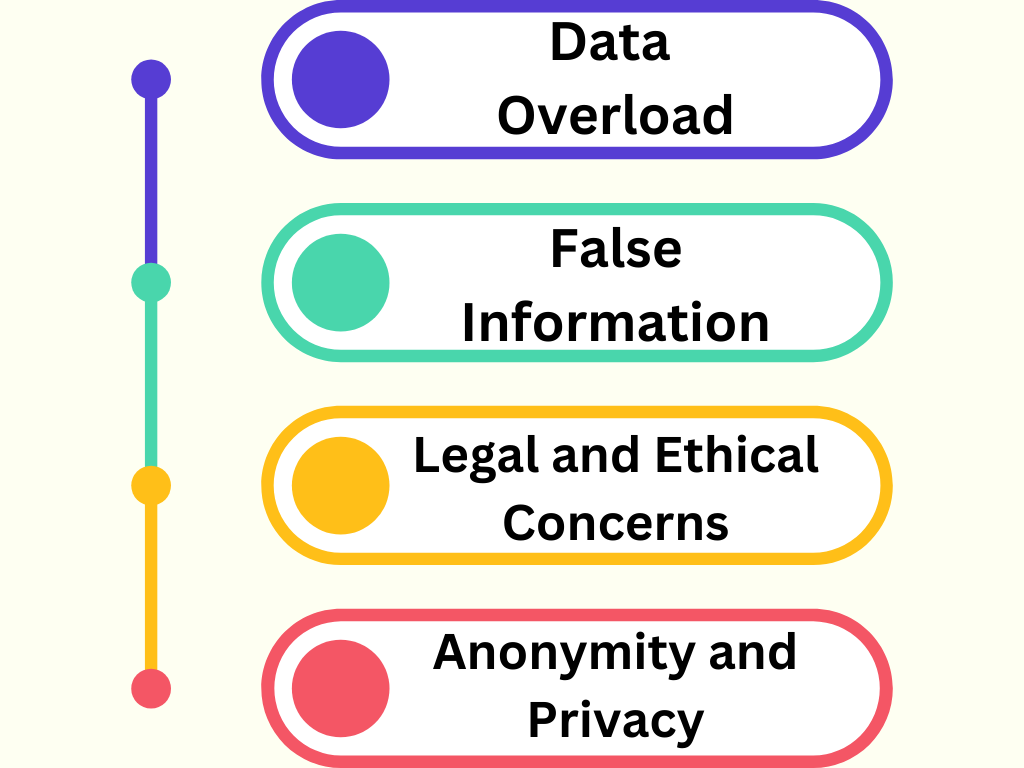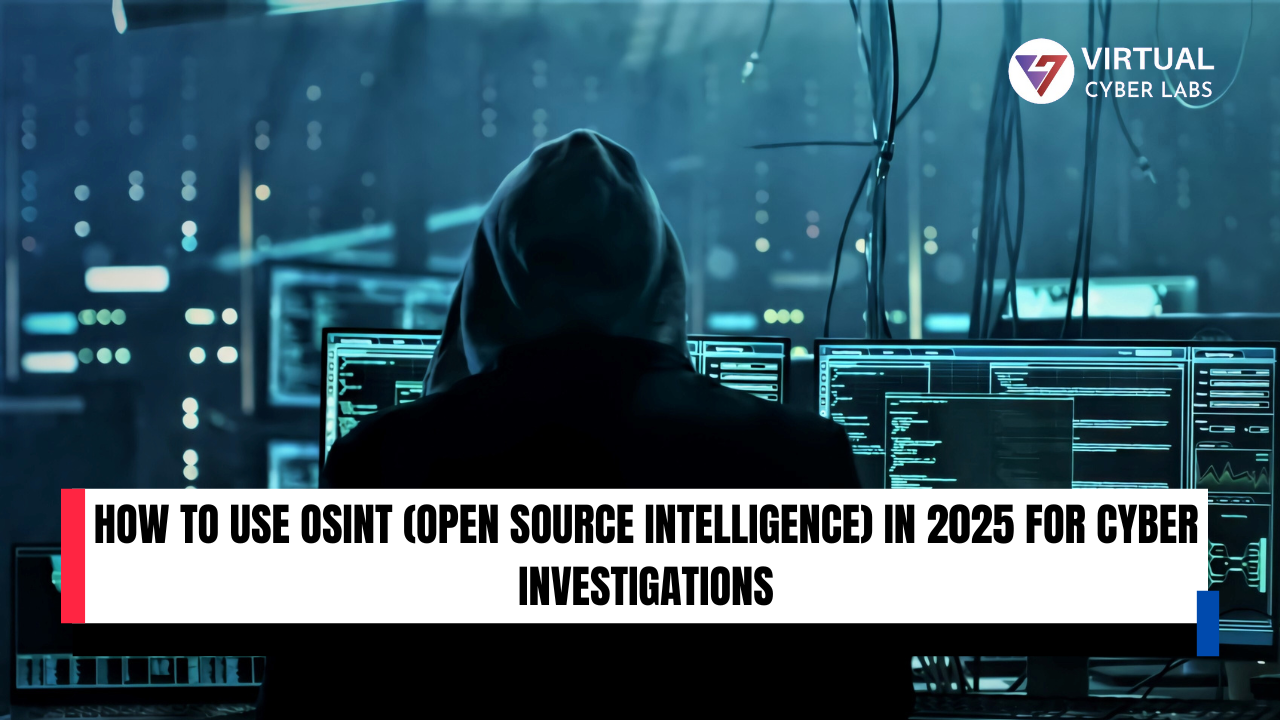How to Use OSINT (Open Source Intelligence) in 2025 for Cyber Investigations
Open Source Intelligence (OSINT) has become an indispensable tool in modern cyber investigations. With the vast amount of publicly available information on the internet, investigators can uncover valuable insights into cybercriminal activities, identify threats, and gather evidence for legal proceedings. In this blog, we will explore how to effectively use it for cyber investigations, the tools and techniques involved, and best practices for leveraging it in a secure and ethical manner.
What is OSINT?
It refers to the process of collecting and analyzing publicly available information from various open sources such as websites, social media platforms, public records, forums, and more. Unlike classified or proprietary data, OSINT is accessible to anyone with an internet connection. This information can be used to:
- Identify potential threat actors
- Investigate cybercrimes
- Monitor digital footprints
- Gather evidence for legal cases
In cyber investigations, OSINT provides a wealth of actionable intelligence that can help security professionals understand the motives, methods, and identities of cybercriminals.

Why is OSINT Important in Cyber Investigations?
- Cost-Effective: OSINT tools are often free or low-cost, making them accessible to organizations with limited budgets.
- Real-Time Data: OSINT enables investigators to access real-time information from social media platforms and forums.
- Legal and Ethical: Since OSINT relies on publicly available data, it generally does not violate privacy laws when used responsibly.
- Wide Range of Sources: Investigators can gather data from various sources, including social media profiles, domain registration records, job postings, and leaked databases.
Common OSINT Techniques for Cyber Investigations
1. Social Media Intelligence (SOCMINT)
Social media platforms are a goldmine of information. Investigators can:
- Track a suspect’s online activity
- Identify connections and networks
- Monitor real-time updates
Example Tools:
- Maltego
- Social-Searcher
- OSINT Framework
2. Domain and IP Address Investigation
Investigating domain names and IP addresses can help identify:
- The owner of a website
- The hosting provider
- Associated email addresses
Example Tools:
- Whois Lookup
- IPinfo.io
- Shodan
3. Leaked Data Search
Searching through leaked databases can reveal compromised credentials, allowing investigators to track a threat actor’s digital footprint.
Example Tools:
- Have I Been Pwned
- Dehashed
- Snusbase
4. Geolocation Tracking
Geolocation tools help track the physical location of a suspect through images, social media posts, and IP addresses.
Example Tools:
- Google Earth
- GeoSocial Footprint
- Creepy
5. Metadata Analysis
Analyzing metadata from documents, images, and videos can provide insights into:
- The author’s identity
- Location data
- Device information
Example Tools:
- ExifTool
- FOCA
Step-by-Step Guide to Conducting an OSINT Cyber Investigation
Step 1: Define Your Investigation Objectives
Clearly outline the goals of your investigation. Are you trying to identify a threat actor? Gather evidence for legal proceedings? Monitor a specific threat?
Step 2: Identify Relevant Sources
Select the most appropriate OSINT sources based on your objectives. For instance:
- Social Media: For personal information and real-time updates
- Websites and Domains: For tracking online infrastructure
- Leaked Databases: For compromised credentials
Step 3: Use Tools
Leverage OSINT tools to automate the data collection process. Ensure you use tools that match your investigation needs, such as Maltego for network mapping or Shodan for IoT device searches.
Step 4: Analyze the Collected Data
Once you have gathered sufficient data, analyze it to identify patterns, connections, and potential leads. Look for recurring email addresses, usernames, or IP addresses across multiple sources.
Step 5: Document Your Findings
Maintain detailed records of your findings, including screenshots, timestamps, and source URLs. Proper documentation is crucial if the investigation leads to legal proceedings.
Step 6: Verify the Accuracy of Information
Cross-reference data from multiple sources to ensure accuracy. Avoid relying on a single source, as it may contain outdated or incorrect information.
Step 7: Report and Take Action
Prepare a comprehensive report summarizing your findings and recommended actions. This report can be shared with law enforcement agencies or cybersecurity teams.
Best OSINT Tools for Cyber Investigations
| Tool | Purpose | Website |
|---|---|---|
| Maltego | Network mapping | https://www.maltego.com |
| Shodan | IoT device search | https://www.shodan.io |
| Have I Been Pwned | Leaked credentials search | https://haveibeenpwned.com |
| ExifTool | Metadata analysis | https://exiftool.org |
| Whois Lookup | Domain investigation | https://whois.net |
Challenges in Using Open Source Intelligence for Cyber Investigations

- Data Overload: The sheer volume of data available can be overwhelming. It is essential to filter and focus on relevant information.
- False Information: Not all publicly available data is accurate. Verifying the authenticity of information is critical.
- Legal and Ethical Concerns: While OSINT is generally legal, investigators must ensure they adhere to local privacy laws and ethical guidelines.
- Anonymity and Privacy: Threat actors often use anonymity tools to hide their identities, making it challenging to track them.
Legal and Ethical Considerations
When conducting Open Source Intelligence investigations, it is crucial to:
- Respect Privacy: Do not access information that requires authentication without proper authorization.
- Follow Local Laws: Ensure that your investigation complies with local laws and regulations.
- Use Ethical Practices: Avoid deceptive practices or misrepresentation during the investigation.
Real-World Use Cases in Cyber Investigations
- Tracking Cybercriminals: Law enforcement agencies have used OSINT to track down cybercriminals by analyzing their social media activities and leaked credentials.
- Phishing Campaign Analysis: Cybersecurity teams use OSINT to investigate phishing campaigns by examining domain registrations and email headers.
- Threat Intelligence: OSINT helps organizations monitor potential threats by identifying suspicious IP addresses, domains, and social media posts.
Conclusion
OSINT is a powerful tool for cyber investigations, providing investigators with valuable insights and actionable intelligence. By leveraging various OSINT tools and techniques, cybersecurity professionals can uncover hidden threats, track threat actors, and gather critical evidence. However, it is essential to use OSINT responsibly, adhering to legal and ethical guidelines to ensure that investigations remain lawful and respectful of privacy rights.
With the right approach, OSINT can significantly enhance the effectiveness of cyber investigations, helping organizations stay one step ahead of cyber threats.







